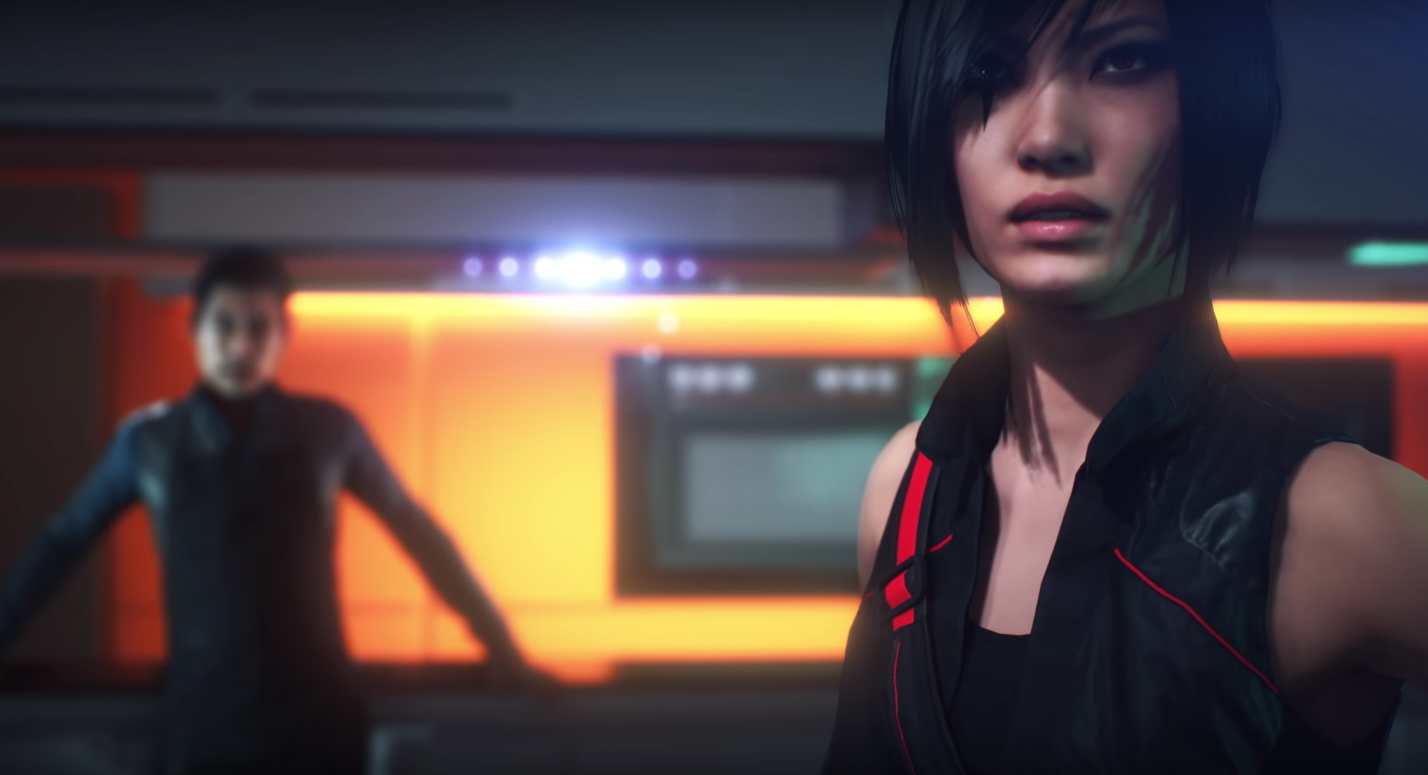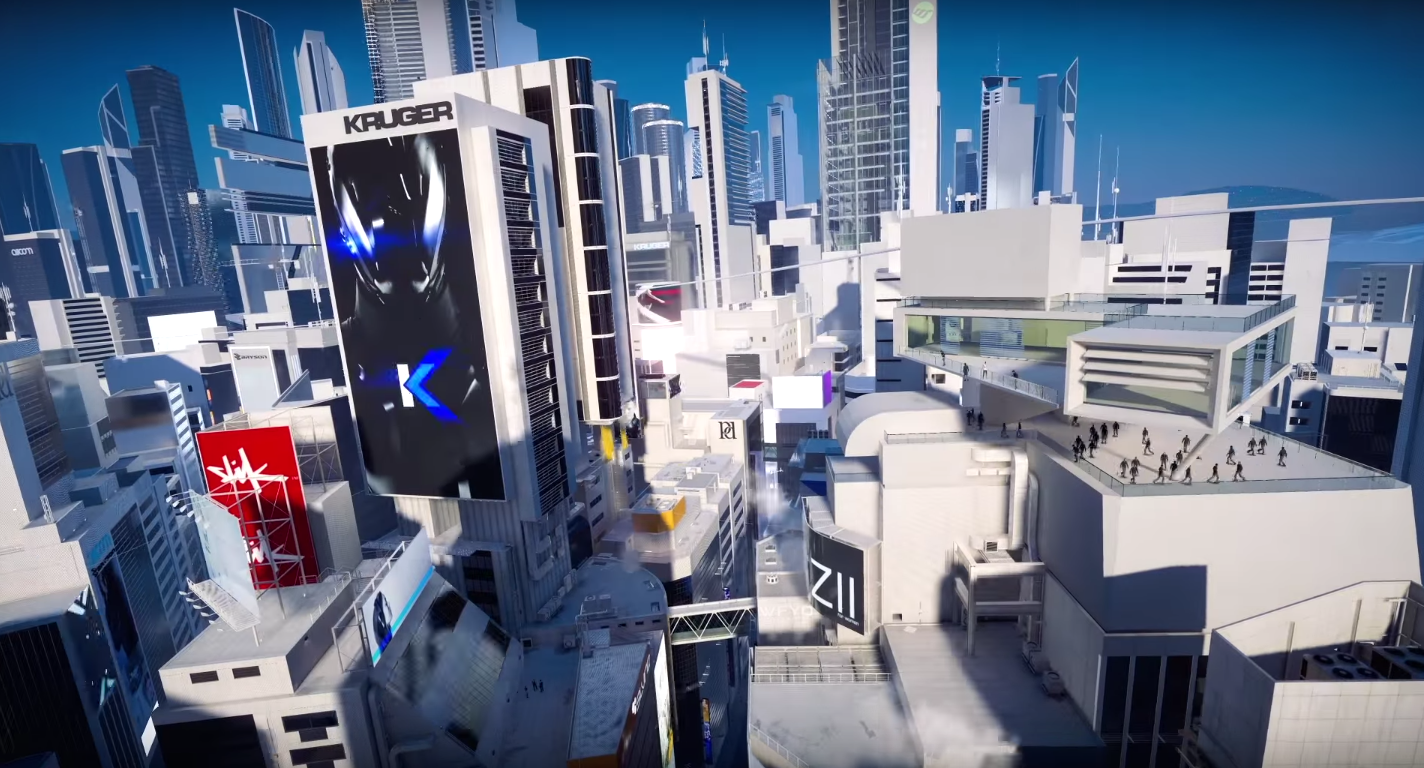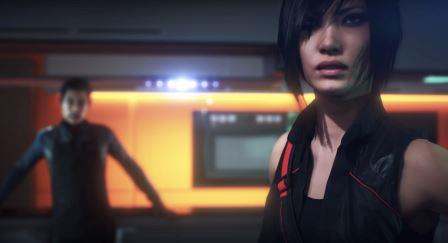‘Mirror’s Edge Catalyst’ and the long shadow of a cult classic
“It’s a game that’s built a lot on momentum and forward movement and not stopping, reaching almost a zen-like thing.”
That’s how DICE Design Director Erik Odeldahl describes his latest game, Mirror’s Edge Catalyst. It stars Faith, a freerunner, as she sprints, slides and leaps around a stark-white futuristic urban sprawl. The city is her playground. On top of a skyscraper, Faith builds up speed and swings onto a thin ledge, where she seamlessly dashes and jumps, rolling onto the roof of the next building and always running, running, running. For many fans, this constant motion is what the series is all about.
But Odeldahl’s favorite part of Catalyst involves no movement at all.
“I find it extremely nice to just climb up somewhere really, really high up and then just stand still there and actually just look at the city,” he says. “Since it’s been part of my life for so many years now, I’m basically really, really happy seeing the city and seeing that it works and everything is connected. That’s a big thing for me.”
Odeldahl is one of the masterminds behind DICE’s new game. He pitched Catalyst as a reboot, he helped conceive the City of Glass and he decided everything would be larger with a nonlinear narrative. He holds Faith’s future in his hands.
“She’s a truly unique heroine,” Odeldahl says. “First, the fact that she’s a heroine — she’s not your standard game hero. But she’s also so far removed; she’s not a cliche and she’s got a very unique look.”
The original Mirror’s Edge, released in 2008 for the Xbox 360 and PlayStation 3, is a cult classic. Its hordes of fans are hungry for more freerunning, and they have specific requests for the new game. Essentially, they want more: more freerunning, more city to explore, more characters to interact with and more story to absorb.
It’s Odeldahl’s job to provide these things in Catalyst, while also retaining DICE’s own creative vision for the game. Luckily, Odeldahl knows what the series’ long-time hardcore fans want — because he’s one of them.
“Personally, I’ve always felt we were doing the right thing,” he says. “But you’re always worried. You never really know if you’re doing the right thing until people actually play the game. There’s a lot of heritage with Mirror’s Edge; it was very well-received, and it’s also a very unique title. And we wanted to build on that uniqueness; we wanted to create something that was true to the first game but improved upon it in a lot of areas.”
Odeldahl joined DICE in 2006, when Mirror’s Edge was in production, but he was brought on to build Battlefield games. He caught glimpses of Mirror’s Edge around the office, and when he finally got his hands on it in 2007, he was hooked.
“I immediately wanted to work on that game,” Odeldahl says. “But it didn’t work out that way.”

He ended up building Battlefield 3 and the 2010 installment of Medal of Honor before he was offered a chance to join a group working on the new Mirror’s Edge. Odeldahl and his team pitched the game to studio executives as a reboot with a vast, open city and nonlinear storyline. They wanted a clean slate in a fresh world with plenty of space for players to freerun. It wouldn’t have guns, it would feature asynchronous multiplayer modes and Faith would reprise her role as the star.
Catalyst hasn’t changed much from that initial pitch.
“We wanted to not just create a new game but actually to build a world with a big city, the City of Glass, where you free-roam as a player, but also a world with a history and a future — political conflicts and that type of stuff,” Odeldahl says.
Mirror’s Edge Catalyst has been delayed twice since its announcement. First it was pushed back from February to May of this year, and then from May 24th to June 7th (more of a two-week hiccup than a full-fledged delay). The original setback was because Odeldahl and his team requested extra time, and the second was to incorporate feedback from the game’s closed beta.
Even though it resulted in a small delay, the beta went extremely well from Odeldahl’s point of view.
“When you release games, and the internet being the internet, there’s always some negativity,” he says. “But I actually looked and I could find very little of it. That, to me, was the most surprising thing.”

Fans have waited a long while for a new Mirror’s Edge installment, but it hasn’t been in vain. Catalyst exists only because the proper amount of time has passed, allowing technology to catch up with DICE’s goals. The PlayStation 4 and Xbox One finally boast enough memory and processing power to support a city on this scale (without generating a million loading screens).
“We literally couldn’t have built this game on the older consoles,” Odeldahl says. “It would have been a different game.”
Mirror’s Edge Catalyst would also be a completely different game if it was built from scratch for virtual reality. As an immersive first-person freerunning experience, it seems like an obvious candidate for VR, and series fans haven’t been quiet about that. Odeldahl and his team have certainly talked about Mirror’s Edge in VR, but it’s simply not in the cards — or the code — right now.
“The thing with VR is that it requires you to design and build for VR from the beginning,” Odeldahl says. “It’s very hard to port an experience. … Mirror’s Edge could very well work in VR, but we wanted to focus on the body awareness of a standard game now.”
DICE will release Mirror’s Edge Catalyst on June 7th, offering Faith another chance to prove the value of first-person freerunning. The City of Glass is complete and ready to be conquered; its buildings stand sleek and tall. And on top of one towering structure stands Faith, completely still, surveying the city that Odeldahl and DICE built.
(71)




